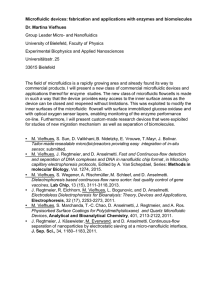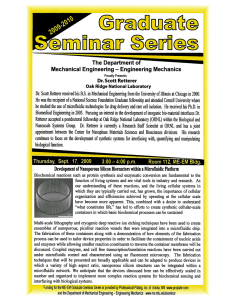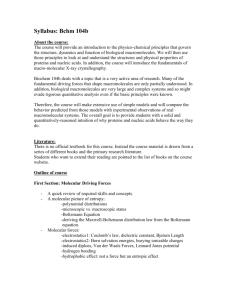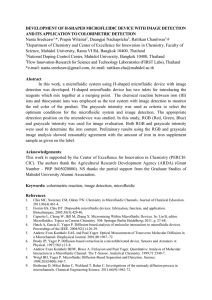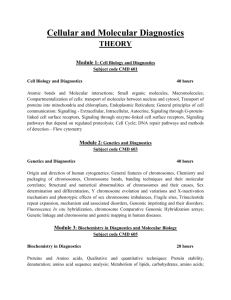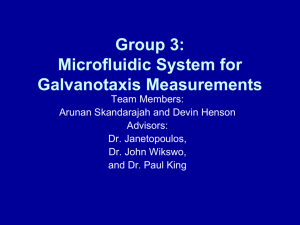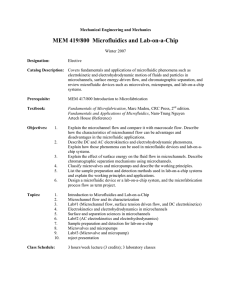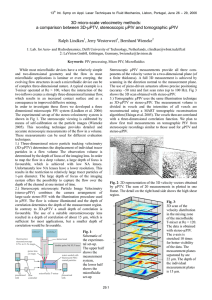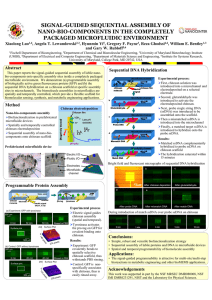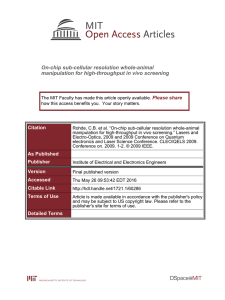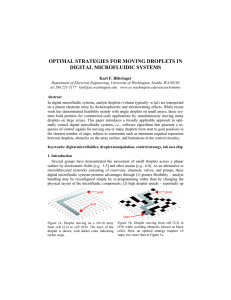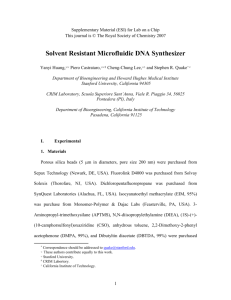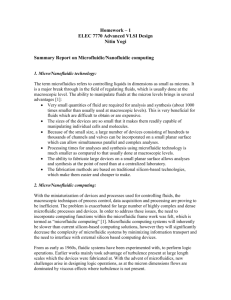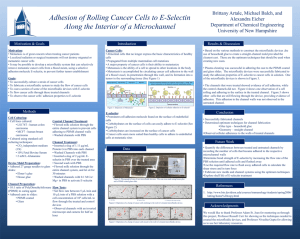A Microfluidic Droplet Platform for Quantitative Nucleic Acid Assays
advertisement
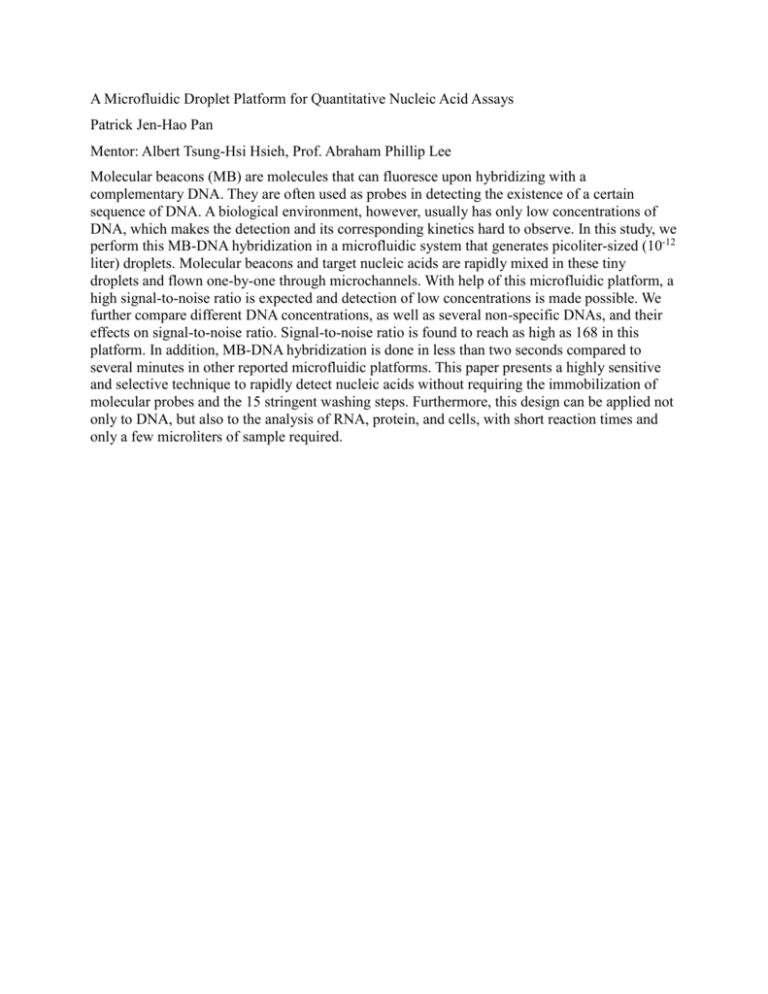
A Microfluidic Droplet Platform for Quantitative Nucleic Acid Assays Patrick Jen-Hao Pan Mentor: Albert Tsung-Hsi Hsieh, Prof. Abraham Phillip Lee Molecular beacons (MB) are molecules that can fluoresce upon hybridizing with a complementary DNA. They are often used as probes in detecting the existence of a certain sequence of DNA. A biological environment, however, usually has only low concentrations of DNA, which makes the detection and its corresponding kinetics hard to observe. In this study, we perform this MB-DNA hybridization in a microfluidic system that generates picoliter-sized (10-12 liter) droplets. Molecular beacons and target nucleic acids are rapidly mixed in these tiny droplets and flown one-by-one through microchannels. With help of this microfluidic platform, a high signal-to-noise ratio is expected and detection of low concentrations is made possible. We further compare different DNA concentrations, as well as several non-specific DNAs, and their effects on signal-to-noise ratio. Signal-to-noise ratio is found to reach as high as 168 in this platform. In addition, MB-DNA hybridization is done in less than two seconds compared to several minutes in other reported microfluidic platforms. This paper presents a highly sensitive and selective technique to rapidly detect nucleic acids without requiring the immobilization of molecular probes and the 15 stringent washing steps. Furthermore, this design can be applied not only to DNA, but also to the analysis of RNA, protein, and cells, with short reaction times and only a few microliters of sample required.

